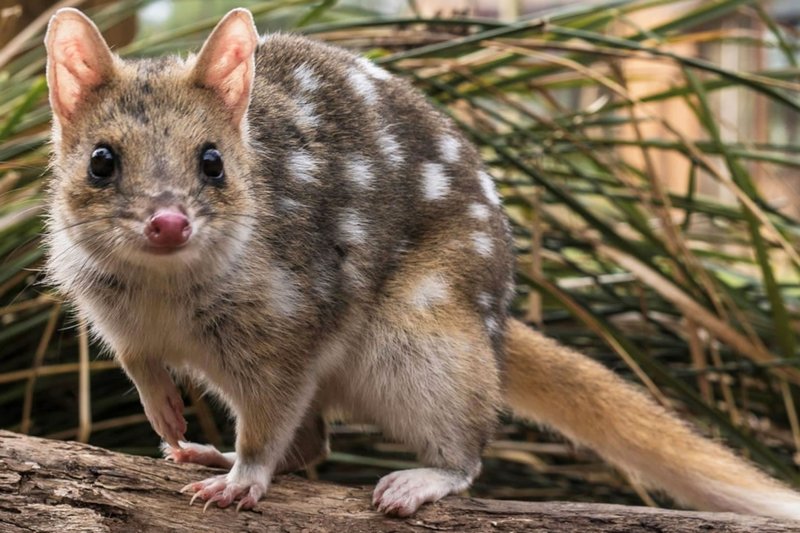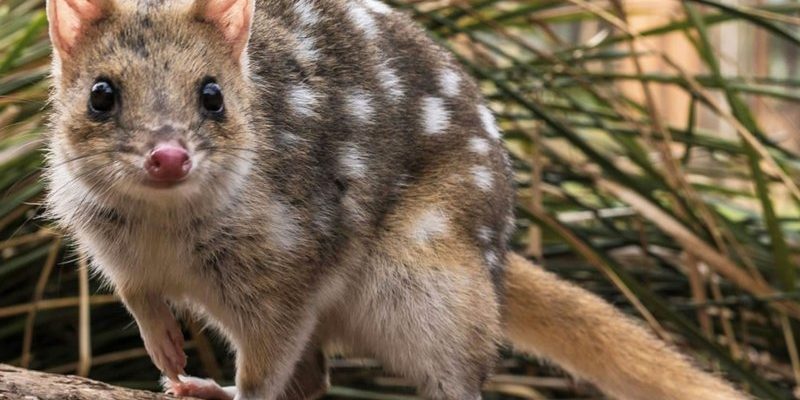
Quolls, with their spotted coats and inquisitive nature, are often overshadowed by more famous Australian animals like kangaroos and koalas. But these nocturnal hunters are like the unsung heroes of their habitats. They help control populations of other animals and contribute to the health of their ecosystems in ways that might surprise you. So, grab your coffee, and let’s dive into the world of quolls and explore their crucial roles in the ecosystems they inhabit.
What Exactly is a Quoll?
Quolls belong to the family Dasyuridae, making them relatives of Tasmanian devils and other small marsupial carnivores. There are four species of quolls: the Eastern quoll, the Western quoll, the Northern quoll, and the nursing quoll. Each species has unique traits and habitats. For instance, the Eastern quoll sports a lovely brown fur coat with white spots, while the Northern quoll is a bit more robust and has a broader range.
Unlike many other mammals, quolls are primarily nocturnal, meaning they come alive at night. They are skilled climbers and often make their homes in trees or dense underbrush. You can think of them as the agile little ninjas of the forest. Their diet mainly consists of insects, small mammals, and even birds. This makes them important predators in their ecosystems.
The Predator-Prey Dynamic
Here’s the thing: each ecosystem thrives on a delicate balance of predator and prey. Quolls serve as predators, playing an essential role in keeping populations of their prey in check. By hunting smaller animals, they help prevent any single species from overwhelming the environment. This, in turn, promotes biodiversity.
Imagine a forest where quolls don’t exist. Without these skilled hunters, the populations of certain animals could explode, leading to overgrazing or depletion of vegetation. This could cause a chain reaction, affecting everything from soil health to the larger animals that depend on plants for food. Quolls are natural regulators, ensuring that the balance of life remains intact.
Soil Health and Plant Diversity
It might sound surprising, but quolls also contribute to soil health and plant diversity. When quolls hunt for their food, they help keep herbivore populations, like rabbits, under control. This is important because overpopulated herbivores can strip away vegetation, leading to soil erosion and loss of plant species.
With a healthy population of quolls controlling the herbivores, we see a richer variety of plants thriving in their environment. These plants are crucial for providing habitat and food for a wide range of other animals. Healthy soil and diverse greenery create a thriving ecosystem, all thanks to our little friend, the quoll.
Seed Dispersal and Habitat Creation
You might be wondering how quolls might contribute to seed dispersal. Well, as quolls hunt and consume fruits or other plant parts, they can inadvertently aid in the spread of seeds. When the seeds pass through their digestive system, they often come out intact and ready to germinate. This process is essential for plant regeneration in their habitats.
As quolls move through their territories, they create paths and clearings in dense vegetation. These paths not only help them navigate their environment but also create microhabitats favorable for other species to thrive. So, while they’re busy hunting, they’re also shaping the landscape in ways we might not initially recognize.
The Threats Quolls Face
Unfortunately, quolls are facing a tough battle for survival. Habitat loss due to urban development, agriculture, and climate change poses significant threats. Additionally, they are vulnerable to introduced species like cats and foxes, which prey on them and compete for resources. This is a critical concern because as quolls decline, the very balance they maintain in ecosystems starts to wobble.
Conservation efforts are underway to protect these remarkable creatures. Habitat restoration, predator control, and public awareness campaigns are all part of the strategy to ensure that quolls can continue to thrive. By protecting quolls, we are not just saving a species; we are also preserving the intricate web of life they help uphold.
Why Quolls Matter More Than You Think
So, why should we care about quolls? Beyond their adorable appearance, these marsupials are an essential part of their ecosystems. They maintain balance, support biodiversity, and contribute to the health of the environment. Their presence is a sign of a healthy ecosystem—when quolls are thriving, it often means that the environment is too.
Think of quolls as the canaries in the coal mine. If their populations decline, it’s a signal that something isn’t right in their habitat. Protecting quolls means protecting the entire ecosystem they inhabit. It’s all connected, and every creature, no matter how small, plays a role in the broader picture.
How You Can Help
You might be wondering what you can do to support quolls and their ecosystems. Here are a few simple steps:
- Support conservation efforts: Look for local organizations dedicated to wildlife preservation.
- Be mindful of habitat destruction: When developing land or gardening, consider the impact on local wildlife.
- Spread awareness: Share information about quolls with friends and family to raise awareness of their plight.
- Reduce litter: Keep natural spaces clean to protect wildlife and their habitats.
In conclusion, quolls may appear small and unassuming, but their impact on the ecosystems they inhabit is monumental. By understanding and appreciating their roles, we can work together to ensure they continue to flourish. Let’s make sure these little heroes remain a vibrant part of our natural world.

